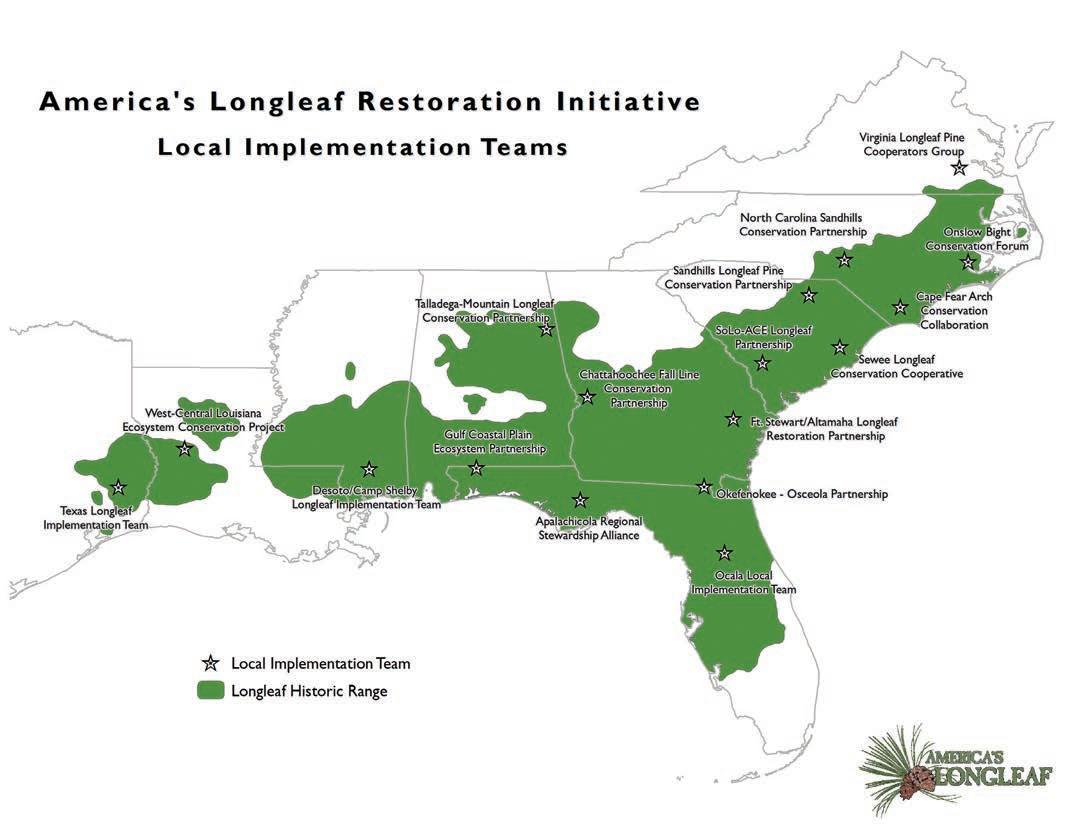
2 minute read
Management Checklist
MANAGEMENT CHECKLIST | SPRING 2021
Evaluate Young Longleaf Stands: • Assess winter seedling plantings for any early mortality from freeze damage or other factors. • Uncover and/or lift any viable containerized longleaf seedlings that were planted too deep.
Advertisement
Plan for Your Next Longleaf Planting: • For fall and winter plantings, order your seedlings early (by
April if possible). Sometimes nurseries sell out of preferred seed sources by early summer. • A list of our partner nurseries can be found at www.longleafalliance.org.
Assess Longleaf Recruitment: • If promoting natural regeneration is your goal, conduct your longleaf pine cone and flower counts in May to assess the developing crop, as well as next year’s potential crop. • If a good crop is developing, prepare the seedbed with prescribed fire – see burning section below. Mow the Competition: • Avoid complete mowing in spring to early summer to reduce the loss of ground-nesting birds. Most birds will re-nest if damage does occur and suitable habitat is nearby. • Mowing can be a tactical tool but consider combining it with periodic patch burning to enhance habitat development and condition.
Plant Native Warm-Season Grasses: • Check for weedy competition 7-10 days prior to seeding. If needed, treat with herbicide. • Time planting with seasonal rain events. • For successful germination, seed must be planted less than 1/4 inch deep.
Apply Herbicide Treatments: • Assess stands for herbaceous competition to determine if there is a need for chemical release, especially on former agricultural sites. If using any Oust® product, test pH to ensure it is below 6.2 to avoid seedling mortality. For any release, avoid periods of stress or late-planted seedlings. • Apply hexazinone as a site prep treatment or to control oaks on sandy sites after bud-break but before full leaf-out. Hexazinone is tough on oaks but easy on many desirable understory species. • For site preparation following a cutover, ensure adequate time for resprouting to develop before applying a herbicide site prep treatment. If in doubt, wait a year to improve the effectiveness of treatment.
Prioritize Burning: • Evaluate what you burned in the winter to determine if you accomplished your desired fire effects. • Burn young longleaf stands invaded by short needle pines or hardwoods that are too large to control with winter burns. • Avoid disking firelines around wetlands and ponds; reptiles and amphibians are actively traveling to wetter areas for breeding, and plowlines can impede their movement. • Promote viable wiregrass seed production, increase wild flower abundance, and control hardwoods with growing season prescribed fire. • Consider the best timing for a seedbed preparation burn on mature longleaf stands with good cone crops to promote natural regeneration. Later in the year, when natural seed fall occurs (October/November), the goal is to increase the likelihood that seed falls on bare mineral soil but not so clean that predators can find and destroy most of the new seed.
Carvers Creek State Park, North Carolina. Photo by Michael Walker.
Reach out to The Longleaf Alliance with any questions you may have pertaining to establishing and managing longleaf stands at longleafalliance.org/contact-us.










